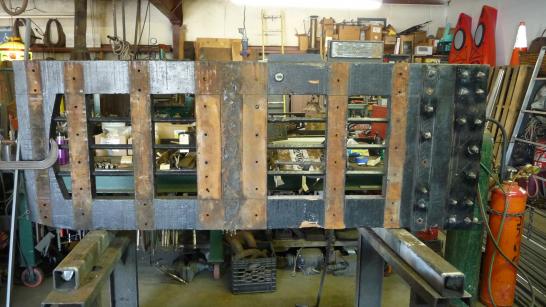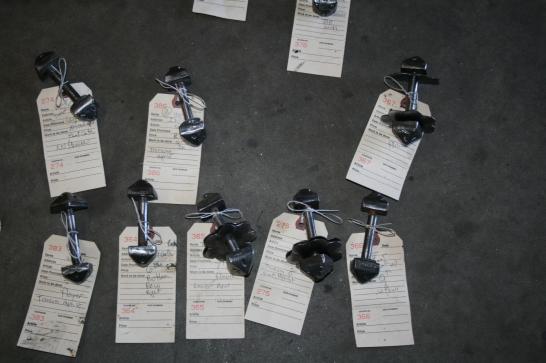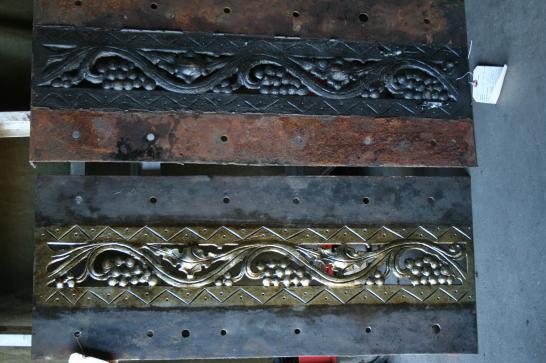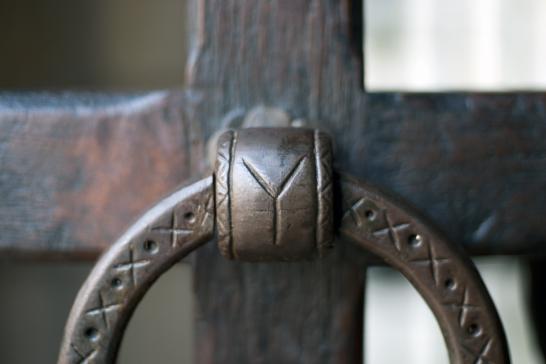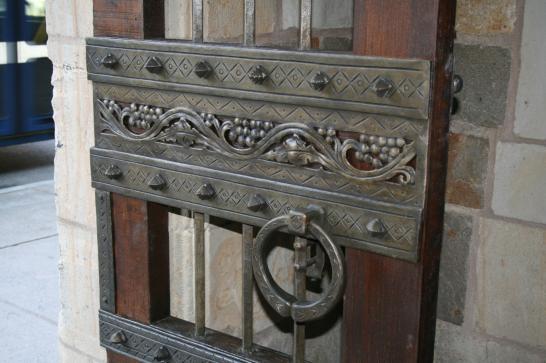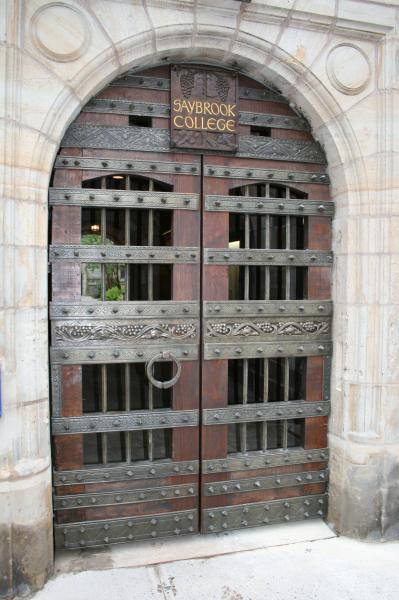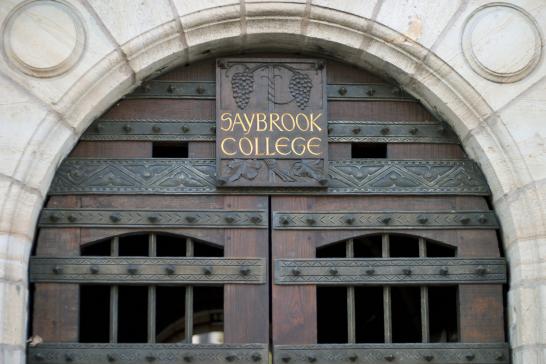
If you've walked past Saybrook College on Elm Street this year, you might have noticed that its gates look different than in years past. Small changes — gold letters, a warm finish — reveal to the careful viewer that in fact a significant change has taken place.
The gates were originally designed and manufactured by Samuel Yellin, who was perhaps the most accomplished artist-blacksmith of the early twentieth century in this country. His work can be seen all over campus — some notable sites include the gates inside of SML, the intricate exterior gates of the Hall of Graduate Studies, and the Memorial Gateway at the High Street entry to Branford College. Yellin's mastery of raw material combined with his understanding of architectural ornament and site context made his work inimitable in its craft and highly sought out by universities, private homeowners, and museums all over the country.
Yellin's Saybrook gates showed inevitable signs of wear after decades of use. Rust, wear, and the visual and physical damage wrought by incompatibility with modern security systems were three of the most serious — and visible — problems affecting the gates. The architects needed to find a way to bring the gates back to full functionality while preserving the artistry of the original work.
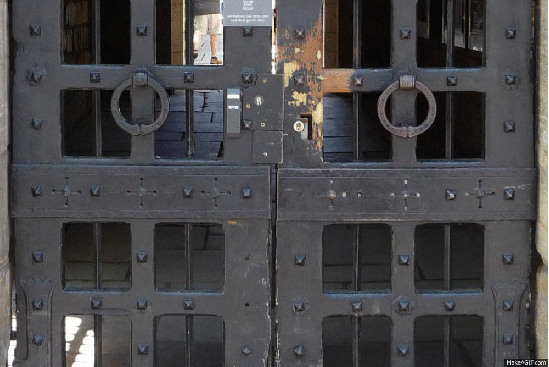
The gate work was part of a larger project managed by Babbidge Facilities Construction (founded by Alex Babbidge TD '85) that was overseen by Project Manager Justin Shanley TD '89. In collaboration with Hammersmith Studios (the project's restoration blacksmith), and Exactitude, Inc. (the wood restorer), the Project Architect at Christopher Williams Architects began by assessing the extent of the damage to the original gates, which are made of Swedes' iron (highly refined wrought iron used for ornamental work in the early twentieth century) and teak. After literally uncovering the damage and diagnosing what needed repair and what required replacement, the metal and wood restoration craftspeople worked to maintain the original aesthetic of the gates while bringing their structural integrity up to modern standards.
The gates, their hardware, and their hinges were all restored or updated. One new ring handle was forged, and metal panels damaged beyond repair were replicated. The load-bearing properties of the stone portal arches were examined, and additional hand-forged stainless steel pintles and hinges were added to better distribute the gates' weight. The carved plaque over the west gate was restored to its original gold-leaf "Saybrook College" lettering. The gates were finished with an historically accurate finish that produces a rich, matte appearance and will require little effort to refresh over the years.
In the words of Joe Chadwick, MArch '82, the Project Architect from CWA for this project, "Repairs in the metal work are indistinguishable from the original work in terms of technique and texture. Wood repairs are neat and honest and sit comfortably in the background with the hand worn edges...the quality of the finished work speaks volumes to the talents of the craft-workers involved."
(Images courtesy of Christopher Williams Architects and Hammersmith Studios.)
